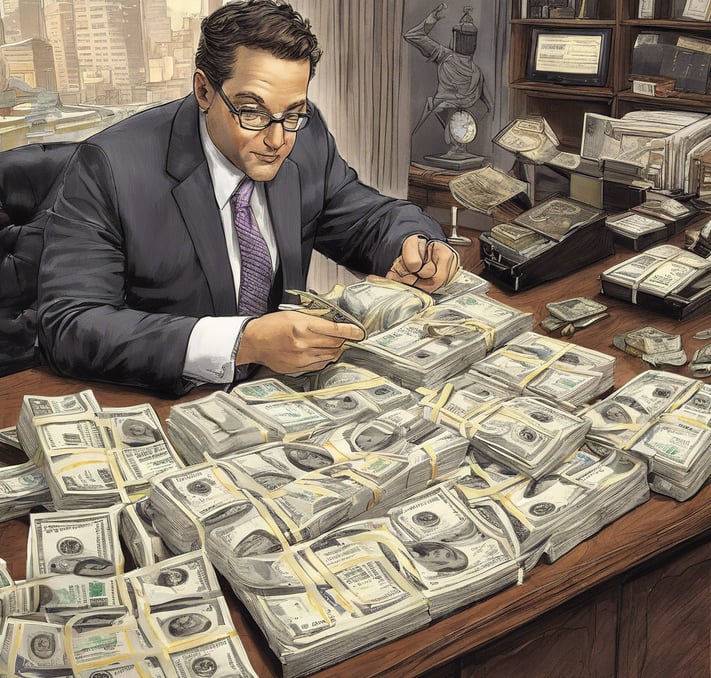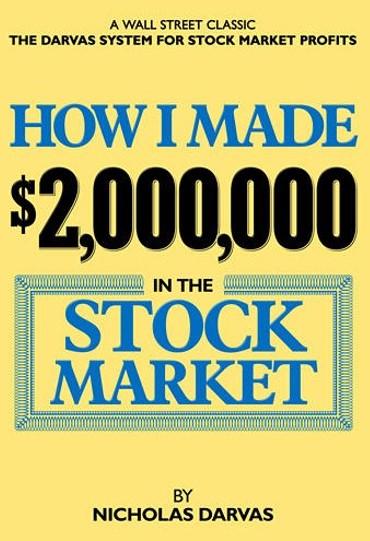How Darvas Made $2,000,000 In The Stock Market !
The Darvas Box Method: A Path to Stock Market Success.
STOCK MARKET


Introduction
This article raised a lot of eyebrows among Wall Streeters who were shocked by Mr. Darvas’ disregard for many of the long-accepted, ordinary investment practices to which they were accustomed. But it also fired the interest and imagination of thousands of investors across the country.
Investing in the stock market can be a lucrative endeavor, but it requires knowledge, patience, and a well-defined strategy. In this blog post, I will share the story of how Nicolas Darvas made $2,000,000 in the stock market and the lessons we can learn from his success.
Background
First, Mr. Darvas is a showman. His dance act is one of the most exciting international acts in show-business history, and he and his sister Julia have starred in some 34 countries. He is accustomed to being constantly in the spotlight of public attention. Therefore, he had no hesitation, as might many private individuals, in making public the details of the stock transactions, which went into his making a fortune. Perhaps never before in history has any individual so fully exposed his financial dealings to the public eye.
Second, it turned out that Mr. Darvas is far more than a spectacular dancer. He is a highly literate individual with a solid background in economics and sociology gained at the University of Budapest; a former sportswriter, journalist and crossword-puzzle editor in his native country; and therefore thoroughly qualified to write a book.
As a result, the COUNCIL now takes pride in presenting one of the most extraordinary success stories in the history of Wall Street. It is especially significant not only because this investment record was made by a true nonprofessional and "outsider" who was investing for that legendary "second income", but also because the profits he made were not the result of a lucky killing or chance tip.
On the contrary, the investment methods that eventually made Mr. Darvas a millionaire were the result of hard-won experience, years of mistakes and learning from those mistakes. These specific, highly practical methods can serve as a useful guide to every individual investor.
We think that Mr. Darvas' techniques, especially his unique "TechnoFundamentalist Theory," and many of his pithy stock-market maxims—"I just jog along with the trend trailing my stop-loss insurance behind me." "There are no good or bad stocks, there are only rising and falling stocks." "I can become a diagnostician but I can never become a prophet." — will become an accepted part of the pages of Wall Street history.
To further clarify Mr. Darvas' approach, the COUNCIL has drawn up and added to his book a number of charts showing his operations in the major stocks that helped him make over $2,000,000 in the stock market in a period of 18 months dating from when he first successfully applied his perfected theory.
Mr. Darvas is still a dancer, because that is his profession; and he is still an investor, because he enjoys it and still makes money at it. Everything about him is unorthodox. He has no office, not even a desk for his financial dealings. He works from his hotel room or the bar in the Georges V in Paris, the Dorchester in London or the Plaza Hotel in New York. When he is in New York, his favorite city, he sits every evening at his usual table in the fashionable Oak Bar of the Plaza Hotel with a newspaper page, a telegram, and some figures on a half-sheet of paper. He appears to be relaxing like the others around him—but actually he is studying stock prices and analyzing the market with the brilliant approach he has evolved over the past few years and which has brought him millions.
The story of Nicolas Darvas is one of the astonishing legends of today's America. We are proud to be able to publish it in a book, which we believe will be a stock-market classic for many years to come.
The Darvas Box Method
One of the key strategies that Darvas used to achieve his success was the Darvas Box Method. This method involves identifying stocks that are in a strong uptrend and using a box-like pattern to determine entry and exit points.
First, Darvas would look for stocks that were breaking out to new highs and had a strong uptrend. Once he identified a stock, he would draw a box around the trading range, with the top of the box representing the highest price and the bottom of the box representing the lowest price.
Next, Darvas would wait for the stock to break out of the box and reach a new high. This breakout would signal a potential buying opportunity. He would then enter a trade, placing a stop-loss order just below the bottom of the box to limit his risk.
If the stock continued to move higher, Darvas would trail his stop-loss order, locking in profits along the way. He would only sell the stock if it broke below the stop-loss level.
Lessons Learned
There are several lessons we can learn from Nicolas Darvas' success:
Focus on strong uptrends: Darvas looked for stocks that were in a strong uptrend, as these were more likely to continue moving higher.
Use a defined strategy: Darvas had a clear and well-defined strategy that he followed consistently. This helped him avoid emotional decision-making and stay disciplined.
Manage risk: By placing stop-loss orders and trailing them as the stock moved higher, Darvas was able to limit his risk and protect his profits.
Continuous learning: Darvas was a self-taught investor who constantly sought to improve his knowledge and skills. He studied stock charts, read financial publications, and learned from his own experiences.
Patience and discipline: Darvas was patient and waited for the right opportunities to present themselves. He did not chase after every stock or try to time the market.
Conclusion
Nicolas Darvas' success in the stock market is a testament to the power of having a well-defined strategy, managing risk, and staying disciplined. By following his example and incorporating these principles into our own investing approach, we can increase our chances of achieving success in the stock market.




